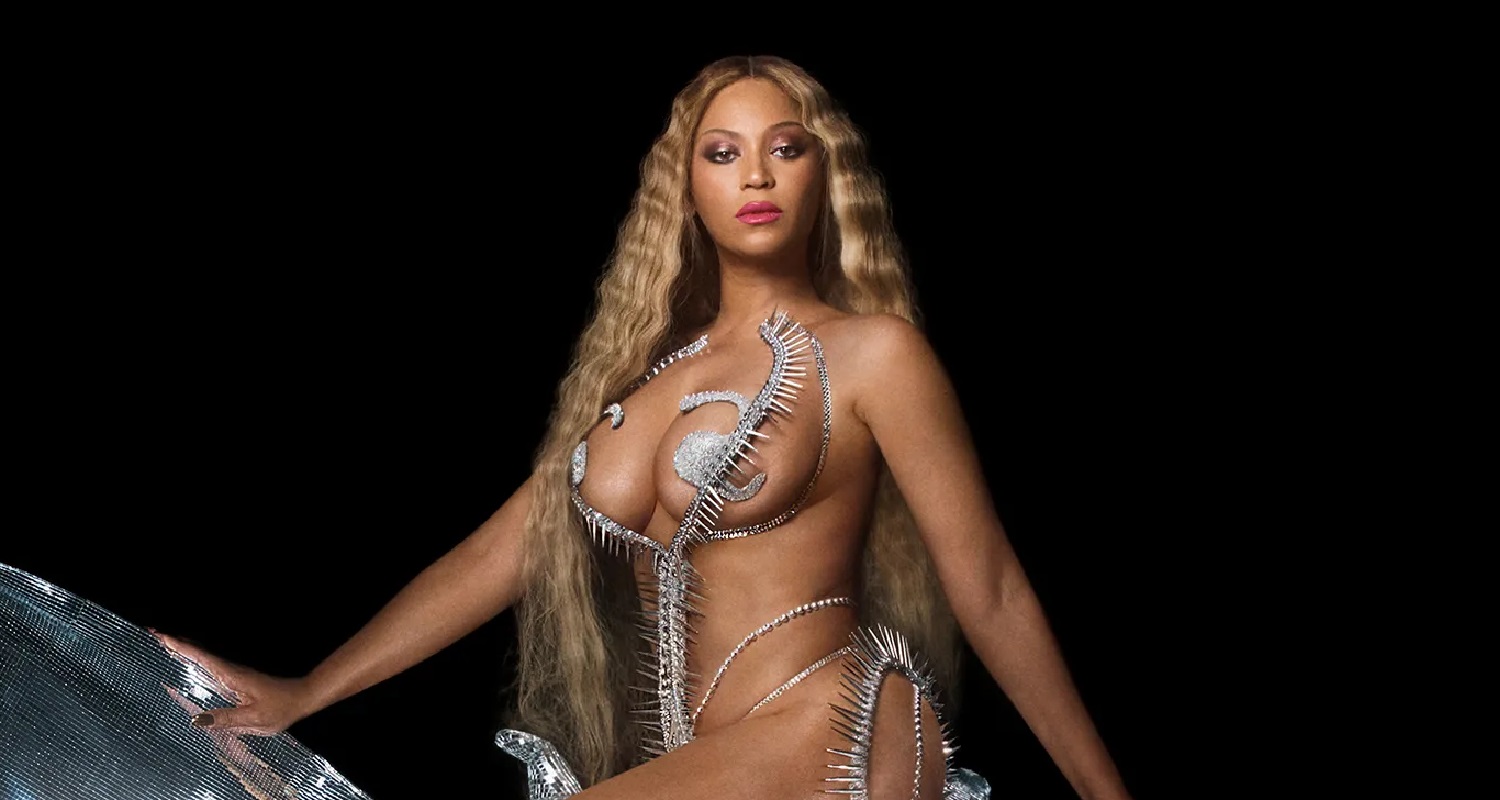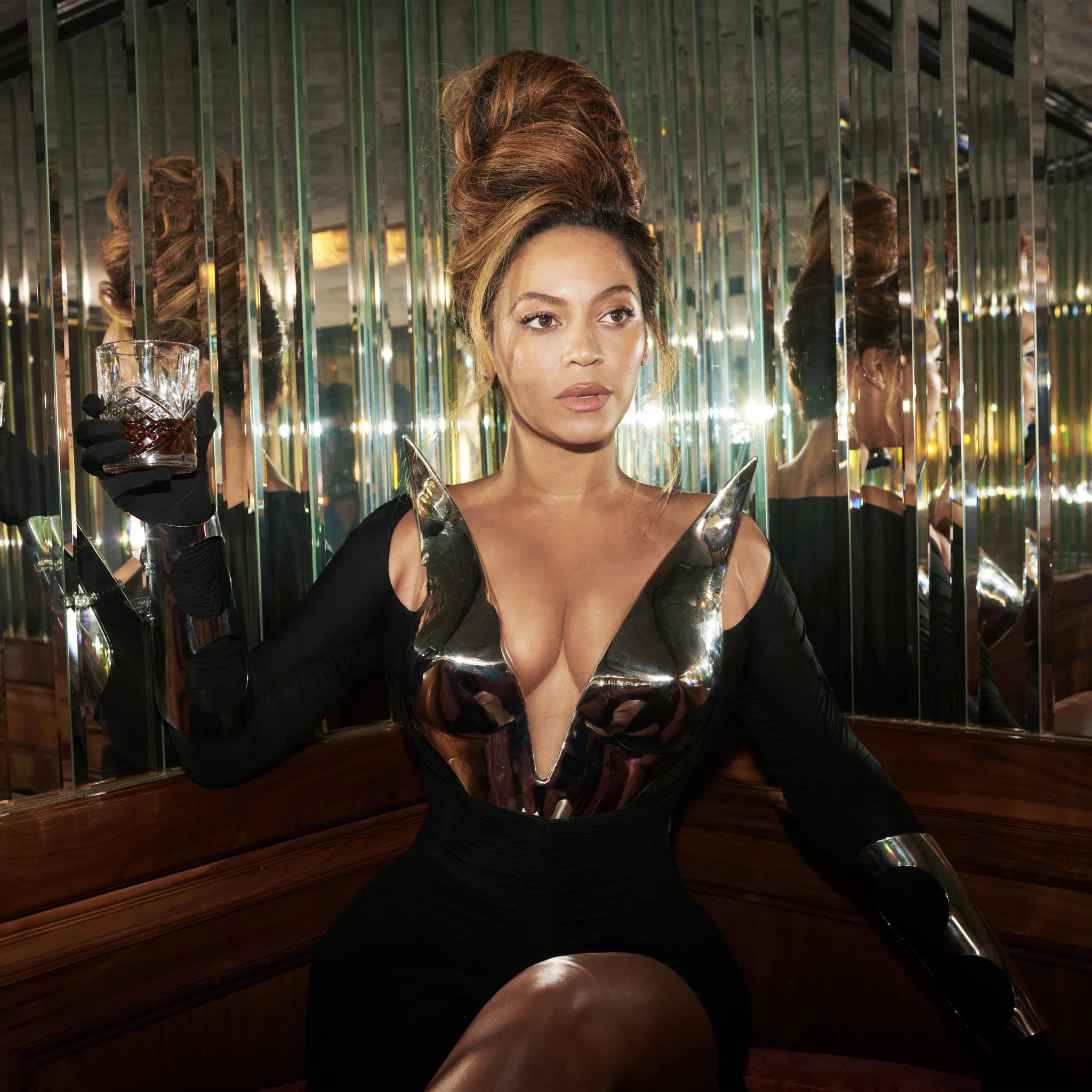Beyoncé Renaissance review: ‘A celebration of disco-trap femme-inism’
The spirit of Beyoncé's late uncle and generations of Black queer music permeate the singer's seventh studio album, which celebrates sexuality and spirituality on the dancefloor.

Words: Craig Seymour; Image: Carlijn Jacobs
“He was the most fabulous gay man I’ve ever known:” That’s Beyoncé talking about her uncle and “Godmother” Jonny, who was an enchanting presence during her ‘80s Houston childhood. He drove her to school in the morning, shaped her tastes with the music he played, and nurtured her fashion fantasies by making clothes for her and helping her choose looks. It was an idyllic time for a young girl and her gay uncle. But what none of them could’ve known at the time was that H-Town was what researchers would later call one of five “incubator areas,” including New York City, San Francisco, Los Angeles, and Miami, where AIDS entered the U.S. and was allowed to spread unfettered among gay men without any governmental action or concern. Before long, Jonny was affected.
That didn’t stop him from helping Beyoncé’s mother, Ms. Tina, make the aspiring icon’s stage outfits once she became a member of the group Destiny’s Child. Beyoncé recalls watching them “individually sewing hundreds of crystals and pearls… putting so much passion and love into every small detail.”
Jonny didn’t succumb to his illness until the early ‘00s. Hopefully, he got the chance to see his niece on the big screen in Austin Powers in Goldmember and witnessed how she taught the world the “uh-oh” dance with her solo smash ‘Crazy In Love’. It’s cruel timing that he ultimately passed when all Beyoncé’s childhood dreams–ones she likely shared with him during car rides and late nights in the sewing room–were manifesting like something that was always meant to be. In 2006, Beyoncé said that watching her Uncle Jonny lose his “battle with HIV” was “one of the most painful experiences I’ve ever lived.”
She dedicates her virtuosic new album RENAISSANCE, in part, to her uncle, as she writes in the liner notes, “the first person to expose me to a lot of the music and culture that serves as an inspiration for this album.” RENAISSANCE is rooted in the survivalist sass, boundless sexuality, and freedom from traditional song structure of house, a style born in Chicago, but that was nurtured and beloved by Black queer men throughout the States, including those like her uncle Jonny in the South. She even shouts him out on ‘Heated’, which starts as a mid-tempo groove on the order of Drake’s ‘Passionfruit’. then becomes explosive with Bey shouting in the tradition of dancehall toasters like Patra and ballroom commentators like Precious Ebony:” “Uncle Jonny made my dress/That cheap Spandex, she looks a mess.” It’s a line worthy of “bitch tracks” like ‘Cunty’ by underground, genderqueer performer Kevin Aviance and ‘Miss Honey’ by the nearly mythic, late, Jamaica-born drag queen Moi Renee. Both of those are sampled on Beyoncé’s rousing tribute to the culture that created voguing, ‘Pure/Honey’.
Sometimes, Beyoncé stays close to a traditional house sound, as on the propulsive first single, ‘Break My Soul’, which musically evokes Robin S’ pop smash ‘Show Me Love’, but has more thematically in common with club anthems of transformation (Ultra Naté’s ‘It’s Over Now’) and perseverance (Martha Wash’s ‘Carry On’). She samples New Orleans’ trans bounce ambassador Big Freedia’s growling instructions to “Release ya anger/release ya mind/Release ya job/Release the time…” In this way, Bey extends the philosophy she earlier expressed on 2013’s ‘Rocket’, that “We’re so much more than pointless fixtures/Instagram pictures, consumers…” She wants us to be free in this life, but also to know that the spiritual world offers more.
Much of the album plays less like a ‘90s house compilation than the kind of eclectic set a DJ like the Paradise Garage’s late, metamorphic Larry Levan might’ve played had he lived. Beyoncé uses music made for the people of the night to explore how rhythms transformed, yet stayed rooted in tradition, as they traveled – largely due to the horrors of Colonialism and white supremacy – throughout the Black Atlantic, making their way to and through the Americas, the Caribbean, Europe, and the Motherland. She plays with sounds from Texas trill to UK drill (‘All Up In Your Mind’), from Jamaican dancehall beats that make you wanna dutty whin’ (‘Move’ with a thunderous feature from Grace Jones) to Nigerian Afrobeats that compel you to find a partner and slow grind, from 80s house from the Windy City to the amapiano of the City of Gold. Many cuts combine these sounds in a single song, and Beyoncé sings and dances along the transnational continuums of Black musical creativity.
These varied sounds become a map-like backdrop for her to espouse – to use some of her own words–a “disco-trap” femme-inism, celebrating queerness, the multiplicities of gender expression, including “queens,” butch “doms,” “bad bitches,” and “pretty boys,” and the specific, against-the-odds achievements of Black women, starting with herself. Although she’s one of the most celebrated artists in the history of pop culture, she also receives a degree of backlash – much of it fueled by misogynoir, the intersection of racism and sexism – that is in direct proportion to her acclaim. Therefore, she sometimes has to serve as her own advocate. Like Diana Ross proclaimed herself “The Boss” and Janet Jackson warned the world that they wouldn’t know what they “got ‘‘til it’s gone,” Beyoncé opens RENAISSANCE by announcing “I’m That Girl”. Later, on ‘Heated’, she addresses society’s love/hate relationship with powerful Black women by rapping: “Monday, I’m overrated/Tuesday, on my dick.”
But Beyoncé’s boasts aren’t meant to feed her own ego. She provides a template for other Black women—and marginalized people in general–to celebrate themselves, to be “cozy” with who they are, as she sings on a track co-produced by Black trans activist and DJ Honey Dijon.

Image: Mason Poole
All of Beyoncé’s intentions come together on the album’s magnum opus, ‘Church Girl’, which alludes to the singer’s own religious upbringing and her journey to reconcile messages from the pulpit with the wonders she discovered in the sometimes outcast people of the world. The song is co-written by the wholly underappreciated Terius “The-Dream” Nash, who uses hip-hop to express the everyday struggles and joys of Black people in the same way that the blues empowered Harlem Renaissance poet Langston Hughes to do the same. For decades, Nash has served as the playful devil on Beyoncé’s shoulder, encouraging her to stretch and in some cases, burst through the bubble of respectability that has confined other Black women in pop, sometimes to tragic effect.
‘Church Girl’ begins with producer No I.D. – one of the most soulful trackmakers working today – sampling ‘Center Of Thy Will’ by the wildly inventive and influential gospel group, The Clark Sisters. Beyoncé then goes on to deconstruct the distinctions between “good” and “bad” girls that have hampered the personal and public expressions of women, since Sigmund Freud named the “Madonna-Whore complex,” and likely long before that. In Beyoncé’s world, church girls can get “loose” and “bad girls” can act “snotty.”
The song’s meaning doesn’t end there, though. It has multiple, deeply rich layers. Beyoncé sings about “swimmin’ through the oceans of tears we cried,” evoking the Middle Passage and the theft of Black people from Africa, which made music–which transcends language–one of the primary ways for displaced communities to remain in conversation.
Then, there’s another aspect to the song that connects it with Beyoncé’s sense that this–as she titled her 2013 biographical documentary–”life is but a dream.” The meaning is found in her Houston accent and the way she often delivers lines, co-written by Nash, as if she’s chewing gum and about to blow a bubble in your face. When she sings, “Soon as I get in this party/I’m gon’ let go of this body,” it often sounds as if she’s saying, “Soon as I get in this body/I’m gon’ let go of this body,” as if realizing that the human form is just one stage of a much larger experience. ‘Church Girl’ reveals the joint purpose of RENAISSANCE, to give life on the dancefloor and in the spirit.
Beyoncé’s RENAISSANCE is availbe to stream and download now.
Craig Seymour is a Black gay music critic and the author of Luther: The Life and Longing of Luther Vandross and All I Could Bare: My Life in the Strip Clubs of Gay Washington DC. He has a free newsletter and can be found on Twitter as @craigspoplife.
